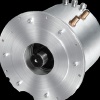Индустриален клъстер "Електромобили" - Учредители:








 |

|

|
| Актуално | За клъстера | Екип | Членове | Документи | Анализи | Услуги | Стани член | Награди | ССЕМ | Контакти |
ИКЕМ - Индустриален клъстер "Електромобили" | Четвъртък, 06.11.2025 | |
|
INTELLIGENT CHARGING OF PLUG-IN VEHICLES
Transportation has a very important function in today’s society. Globally, the energy production of transportation systems is highly dependent on oil, and there are strong expectations that the price as well as the volatility of the price of oil will increase in the future. The transportation sector is also a significant consumer of energy and a significant source of greenhouse gases and other emissions (Davis et al. 2008). Today’s climate and energy policies imply strongly towards diversification of transportation fuels improving energy efficiency and reducing emissions. The use of electrical energy in a broader manner by means of plug-in hybrid electric vehicles (PHEV) and electric vehicles (EV) offers a potential to partly fulfill these challenging requirements. Emission reductions and the amount of primary energy conservation due to plug-in vehicles are, however, highly dependent on the energy system. There are some barriers related to high penetration of plug-in vehicles (PHEV and EV). The most important barrier is the battery technology. Batteries suitable for transportation appliances are very expensive at the moment, but the technology is continuously evolving and prices are expected to go down (Lache et al. 2010). Secondly, a lack of adequate charging infrastructure is a major barrier. This paper concentrates on this issue, and the investigations are often made from the perspectives of the Finnish power system and the Nordic electricity market. The operation of charging infrastructure can be divided into three parts: charging point functions, electricity network operation and electricity markets operation. Charging points are needed to connect battery chargers of the vehicles to the electricity network. Charging points also form a part of the user interface between chargers and vehicle users and between vehicle users and the electricity system. Electricity network transfers the electrical energy to the battery pack. Vehicle chargers affect the power system. Small penetration level of plug-in vehicles does not necessarily have a great impact on the electricity network (except on the low voltage residential networks when high charging powers are used). However, great penetration level of the vehicles can have a remarkable impact on the distribution network at all voltage levels. Some results regarding medium voltage (MV) networks are presented in (Lassila et al. 2009) and (Peças Lopes et al. 2009), and results concerning distribution transformers are presented in (Roe et al. 2009). The functions of the electricity market specify the transactions between different parties of the power system and the electricity market. To minimize charging infrastructure costs, to make electricity market operation more effective, and, to mitigate harmful impacts on the network (i.e. to avoid high cost grid investments), different kinds of “intelligent” or “smart” charging methods have been developed. In this paper, some charging concepts are presented and discussed. These concepts do not include vehicle-to-grid (V2G), vehicle-to-home (V2H) or reactive power related functions, but are restricted only to control of unidirectional flow of active power drawn by the chargers. The paper is organized as follows. In chapter 2, some general aspects of charging are discussed. Models regarding relations between charging infrastructure and electricity market are presented and discussed in chapter 3. In the fourth chapter, intelligent charging methods whose aim is to avoid harmful electricity network effects or even improve the operation of the network are presented and discussed. Some issues of chapters 3 and 4 are somewhat overlapping, but are however discussed separately. Finally, some conclusions are made. |
Продукти 
Комплектна система за задвижване на електромобилиСистемата за електрозадвижване обхваща гама с три основни типоразмера на ел. мощност със съответните компоненти - електромотор и контролер. oще ...Виж всички продуктиАнкета с продължение...
|
|
|
 ЕВРОПЕЙСКИ СЪЮЗ Европейски фонд за регионално развитие Инвестираме във вашето бъдеще |
 |
 ОПЕРАТИВНА ПРОГРАМА „Развитие на конкурентоспособността на българската икономика” 2007-2013 www.opcompetitiveness.bg |
|
Интернет страницата е създадена с финансовата подкрепа на ЕФРР, в рамките на проект „Развитие на Индустриален Клъстер Електромобили” по ДБФП К-02-2/28.09.2011 г. |
|||